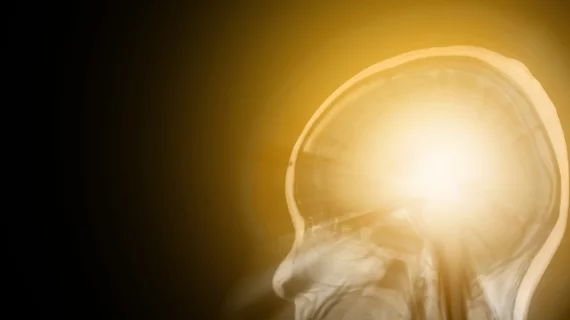Using functional MRI (fMRI), researchers from the University of California (UC) San Diego found that noninvasive vagus nerve stimulation may ease the mental and physical pain experienced by individuals with post-traumatic stress disorder (PTSD).
Vagus nerve stimulation is a form of neuromodulation pain management which includes spinal cord and dorsal root ganglion (DRG) stimulation.
The FDA has approved the method for treatment of episodic and chronic cluster headaches and acute migraines. The findings, detailed in a study published online Feb. 13 in PLOS ONE, could help personalize treatment for PTSD, which according to the National Institute of Mental Health impacts roughly 3.6 percent of U.S. adults per year.
For the study, Imanuel Lerman, MD, a pain management specialist at UC San Diego Health and Veterans Affairs San Diego Healthcare System, and colleagues wanted to know how emotional pain may be influenced by the vagus nerve, a nerve which runs down both sides of the neck from the brainstem to the abdomen and helps maintain heart rate, breathing rate, digestive tract movement and other basic body functions.
“It’s thought that people with certain differences in how their bodies—their autonomic and sympathetic nervous systems—process pain may be more susceptible to PTSD,” Lerman said in a prepared statement. “And so we wanted to know if we might be able to re-write this ‘mis-firing’ as a means to manage pain, especially for people with PTSD.”
The team used fMRI to look at the brains of 30 participants after applying a painful heat stimulus to their legs.
Half of the participants were treated with noninvasive vagus nerve stimulation for two minutes via electrodes placed on the neck before the heat stimulus. The other half received a mock stimulation, according to Lerman et al.
The researchers also measured the sweat on the participants skin before the heat was applied to see how the body’s sympathetic nervous system responded to the pain. The method was repeated several times as the heat increased.
Overall, the vagus nerve stimulation accomplished a few things, including weakening peak response to the heat stimulus in several areas of the brain known to be important for sensory, discriminative and emotional pain processing, as well as delaying the pain response in these brain regions.
Pain-related brain regions were activated 10 seconds later in participants pre-treated with vagus nerve stimulation than in the controls, according to the researchers.
Participants pre-treated with vagus nerve stimulation also had a decrease in sweat response over time and dampened flight-or-flight responses in contrast to the controls.
“Not everyone is the same—some people may need more vagus nerve stimulation than others to achieve the same outcomes and the necessary frequencies might change over time—so we’ll need to personalize this approach,” Lerman said. “But we are hopeful and looking forward to the next steps in moving this approach toward the clinic.”

